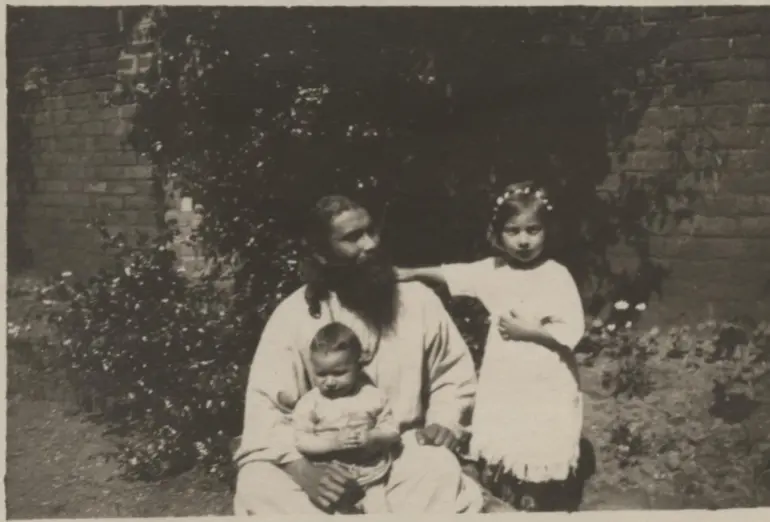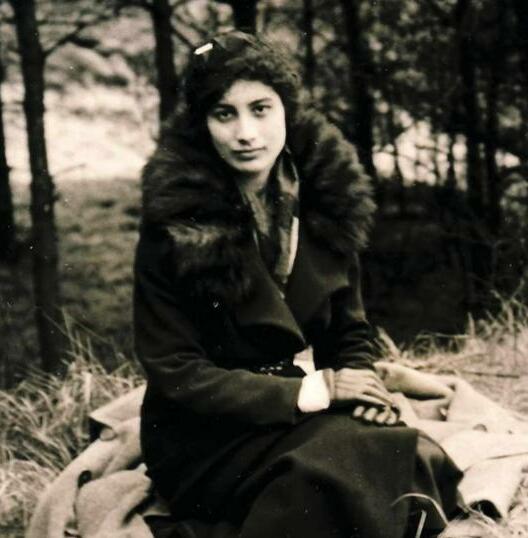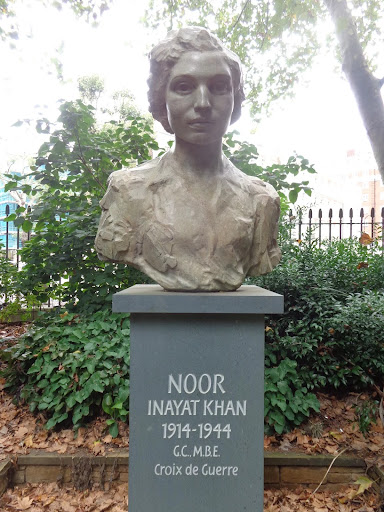(March 6, 2025) “I wish some Indians would win high military distinction in this war. If one or two could do something in the Allied service which was very brave and which everybody admired, it would help to make a bridge between the English people and the Indians.”
These words, spoken by Noor Inayat Khan in A Call to Spy, weren’t just a passing thought. They reflected the deeper purpose that guided her life. She wasn’t just fighting for the Allied cause—she was fighting for recognition, dignity, and the idea that Indians belonged on the frontlines of history, not just as subjects of the British Empire but as equals.

Noor Inayat Khan
Bringing Her Story Back to Life
For years, Noor’s story was overlooked, but in recent times, filmmakers and historians have worked to bring it back into the spotlight. The 2020 film A Call to Spy introduced her to a new audience, showing her extraordinary journey as the first female wireless operator sent into Nazi-occupied France by Britain’s Special Operations Executive (SOE). The film followed historian Shrabani Basu’s 2006 biography, Spy Princess, which played a major role in reviving Noor’s legacy.
Thanks to these efforts, she is now honoured with a statue in London’s Gordon Square and a Blue Plaque in Bloomsbury, recognizing her sacrifice. In late 2024, the Royal Air Force (RAF) Museum put Noor’s George Cross medal on display, making sure her bravery and sacrifice are never forgotten. This tribute helps keep her story alive, inspiring future generations to remember her courage and contributions.
A Childhood of Music and Mysticism
Before she became a spy, before she defied the Gestapo and paid the ultimate price for her bravery, Noor Inayat Khan was a young woman immersed in music, poetry, and the teachings of Sufi mysticism. She was a descendant of Tipu Sultan, the 18th-century ruler of Mysore, who fought against British colonial rule in India.
Born in Moscow in 1914, Noor was raised in a household that valued spirituality, literature, and music. Her father, Hazrat Inayat Khan, was a Sufi teacher who spread messages of peace and unity, while her mother, Amina Begum (born Ora Ray Baker), was an American who embraced Sufism and Indian culture. The family eventually settled in Paris, where Noor studied music and even published a book, Twenty Jataka Tales, a collection of Buddhist stories. By all accounts, she seemed destined for a creative life—until World War II changed everything.

Noor Inayat Khan with her father
From Pacifist to Secret Agent
Noor was raised to believe in peace, but when the Nazis invaded France in 1940, she made a choice. Instead of staying on the sidelines, she fled to England and joined the war effort. She started as a radio operator in Britain’s Women’s Auxiliary Air Force (WAAF). Still, her fluency in French and English soon caught the attention of the SOE, a secret British agency specialising in espionage and sabotage.
Her trainers had doubts—she was nervous, made mistakes, and seemed too gentle for the field. But she was also determined. Despite the risks, she was chosen for one of the most dangerous roles in the war: being a wireless operator in Nazi-occupied France.
The Most Dangerous Job in the SOE
On the night of June 16, 1943, Noor was flown into France under the cover of darkness. With her wireless set hidden in a suitcase, she used the cover of a nurse and worked to relay crucial messages between the French Resistance and Britain.
“Being a wireless operator was the most dangerous job for any SOE agent,” historian Kate Vigurs explains. “Operators had a life expectancy of just six weeks.” Noor defied the odds, lasting months in France, even after the Resistance network she worked with was infiltrated.
Betrayed and Captured
The Gestapo was closing in, and London ordered Noor to return. She refused—she was the only radio link left between the Resistance and the Allies. She kept moving, changing safe houses, and continuing her transmissions, helping to prepare for the D-Day landings.
Then, in October 1943, a French collaborator betrayed the Global Indian. The Gestapo arrested her in Paris, finding her copies of past messages—enough for them to track down more SOE agents. They tortured her for months, but she never revealed a single name. One of her captors later admitted, “I have never come across someone like her. I admired her courage, bravery, and kindness.”
Noor’s Final Days
She tried to escape twice, once even climbing onto the prison roof, but both attempts failed. Deemed “highly dangerous,” she was sent to a German prison, where she was kept in solitary confinement, shackled, and beaten for ten months. Yet, she never broke.
In September 1944, Noor and three other female SOE agents were taken to Dachau concentration camp. In the early hours of September 13, they were led outside and executed. Noor’s final word before she was shot was “Liberté”—French for “Freedom.”
Recognizing Women in War
For years, the contributions of women in war—especially in intelligence and resistance movements—were ignored. Female spies, radio operators, and saboteurs played key roles in the war effort, but their sacrifices were often overlooked. Noor’s story is just one example of the extraordinary bravery women displayed during WWII.
Actress Radhika Apte, who played Noor in A Call to Spy, summed it up: “Women have been crucial in every war, but their stories haven’t been told enough. Noor’s life proves that courage isn’t about gender—it’s about action.”
A Legacy That Lives On
For decades, Noor’s story was forgotten. But today, she is finally recognized as one of Britain’s greatest war heroes. In 1949, she was posthumously awarded the George Cross, Britain’s highest civilian honor for bravery. France honored her with the Croix de Guerre, their top military decoration. In 2012, her statue was unveiled in London—the first of a South Asian woman in Britain. In 2020, she became the first South Asian woman to be honoured with a Blue Plaque.
Noor Inayat Khan was many things—a writer, a musician, a princess, and a spy. But above all, she was a fighter. She fought not just against Nazi oppression but against the idea that her background—Indian, Muslim, and female—made her an unlikely hero. She proved that courage has no boundaries, and that true freedom is always worth fighting for—even at the cost of one’s life.
Read a similar story of Sophia Duleep Singh, took on the British Empire for women’s rights.







